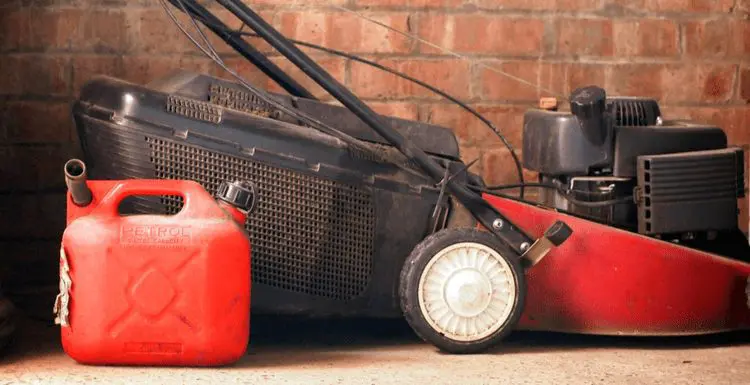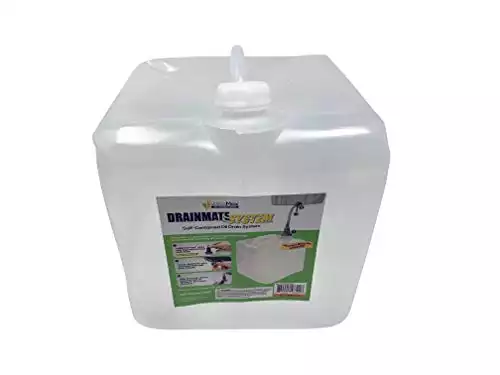Americans used about 123 billion gallons of gasoline in 2020.
Engines in cars, trucks, motorcycles, boats, generators, lawn mowers, and other engines burn the vast majority of that fuel to power transportation and other uses.
But a small fraction of gasoline doesn’t get used in internal combustion engines.
When gas gets contaminated or just gets too old, it can’t power a motor and needs to be disposed of. So, how to dispose of old gas?
The Disposal Dilemma
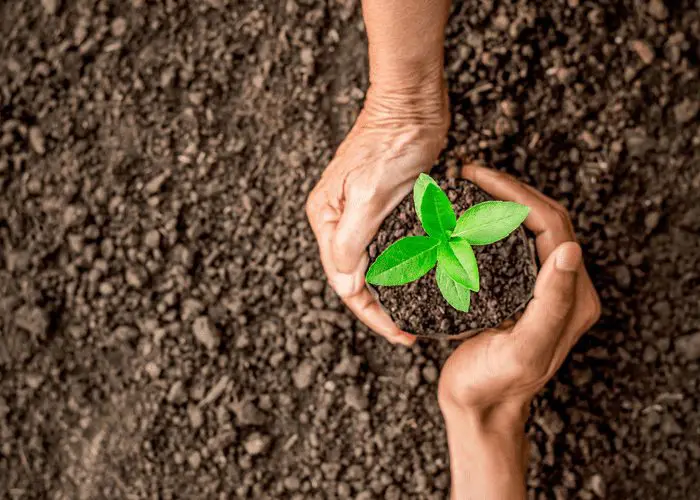
Kram-9/Shutterstock
Filling a car’s gas tank and driving until the gauge shows “E” is a no-brainer. But when it comes to disposing of old gas without burning it in an engine, things get more complicated.
Gasoline-powered internal combustion engines contribute to all sorts of environmental problems, of course. Burning gas throws off carbon monoxide, nitrogen oxides, small particles, and, last but not least, carbon dioxide.
Carbon dioxide contributes to the greenhouse effect and global warming. Improperly disposing of gasoline also creates problems, however. Gasoline is highly flammable and poisonous.
Liquid gas can irritate your skin and damage your eyes. It can cause cancer in animals and kill or injure plants. Just inhaling the fumes can give you headaches, shortness of breath, and dizziness.
Breathing gas vapors for a long period of time can seriously damage your respiratory system. Not surprisingly, the U.S. Environmental Protection Agency (EPA) classifies gasoline as a hazardous waste.
And the Resource Conservation and Recovery Act, a federal law that the EPA enforces, sets out a penalty of up to 15 years in jail and a $250,000 fine for anybody who knowingly transports, treats, stores, disposes of, or exports hazardous waste in violation of the law.
Gas Disposal Don’ts
You can’t just dump old gas down your household drain or the storm drain in the street. Don’t just pour it on the ground, either. Dumping it can contaminate groundwater and sources of drinking water.
Just a gallon of gas can contaminate up to 750,000 gallons of drinking water.
Thinking about enclosing it in an old jar or can and placing it in the trash or pickup? Think again. A municipal landfill is no place for hazardous substances such as gasoline because of its toxicity and fire potential.
Nor should you place it in your regular recycling container. Getting rid of old gas by burning it in the open air doesn’t work either. That creates much more pollution than it would if you burned it in a gasoline engine.
Maybe you’ve decided by now that old gas is too much trouble to try to dispose of. So, you’ll just keep it around and avoid dealing with it.
But old gas is dangerous to keep around. It can leak out of containers. It needs to be stored where children and pets can’t get into it.
Gas vapors can cause fires or even explosions if sparked by a water heater pilot light or similar source. So, dealing with it by not dealing with it also fails the sensibility test.
When you get down to it, none of the common methods for getting rid of trash and unwanted substances works for gasoline. For gas, you need to take a more environmentally aware approach.
How to Get Rid of Old Gas
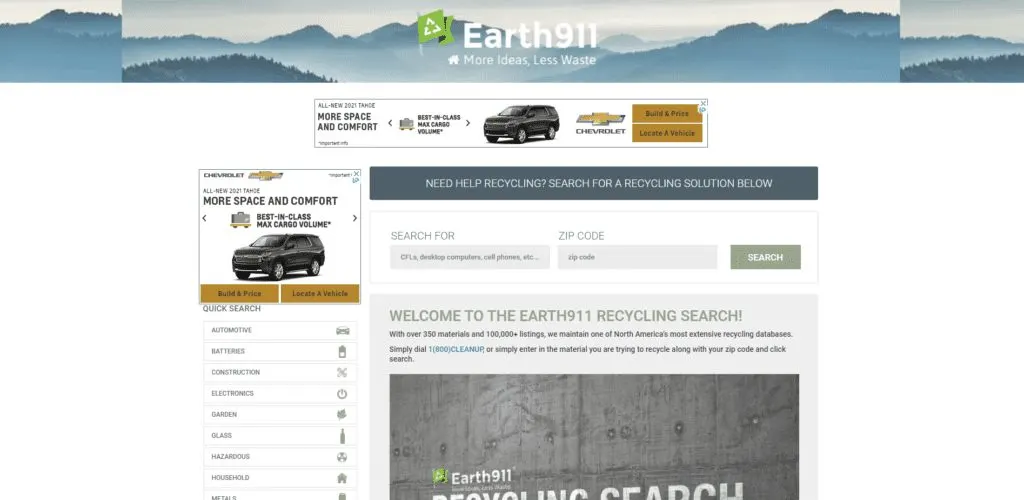
Image Source: Search.earth911.com
The first thing you need to know about getting rid of old gas responsibly is that not just any place can dispose of gasoline. A municipal, country, or other government-sponsored recycling center or hazardous waste disposal facility can often do the job.
Privately owned fuel companies may also be able to help. These facilities can recondition old or contaminated gasoline so it can be reused. To find a local facility that can help you get rid of your old gas, check out the Earth 911 Recycling Search tool.
This online database lets you enter the item or substance you are trying to dispose of, along with your ZIP code. Then it produces a list of convenient options in or near your community.
Each facility may have special rules about how to dispose of gasoline. For instance, one may require that you bring the gas in a certain type of container. Call first to see what you need to do.
Generally speaking, here are some things to keep in mind:
- Don’t mix the gasoline with some other liquid, such as antifreeze or brake fluid. Gas contaminated with these substances can’t be reconditioned or reused.
- Keep gasoline in a container, such as a gas can, intended and labeled for storing flammable liquids.
- Do not use ordinary plastic or glass jars to store or transport gasoline.
- If the original container starts leaking, place it in a bigger leak-proof container and label it as containing gas.
- If you transfer gas from one container to another, use a funnel to minimize the chances of a spill.
- Transfer gas to a different container only in a well-ventilated space with no nearby source of heat, spark, or open flame.
- Keep your face as far away as you can when pouring gasoline. A face mask or respirator will help you avoid breathing vapors.
- Don’t fill a gas container all the way. Leave about 5 percent of the volume empty.
- When transporting a container of old gas, put it in another container, such as a plastic dish pan. If the container falls over in transit, this reduces the chances of a spill.
- Check with the recycling facility you are using to see if a schedule or other rules apply. Some facilities only accept gas on certain days.
- Be prepared to pay for disposing of your old gas. Some facilities charge a fee.
In addition to permanent recycling and disposal facilities, you may be able to get rid of old gas at a community recycling event. Also, check with fire stations; they may take old gas as well.
Auto repair shops are another possible source for gasoline recycling and reuse. Old gas can be used for cleaning parts, for example.
If no recycling option exists within a reasonable distance, you could consider letting the gasoline evaporate. To do this, open the container of gas in a well-ventilated space and leave it until the fluid evaporates.
Make sure no kids or pets can get into it. Evaporation is better than dumping. But only take this route if you have just a small amount to get rid of and no other way to do it.
Do-It-Yourself Recycling
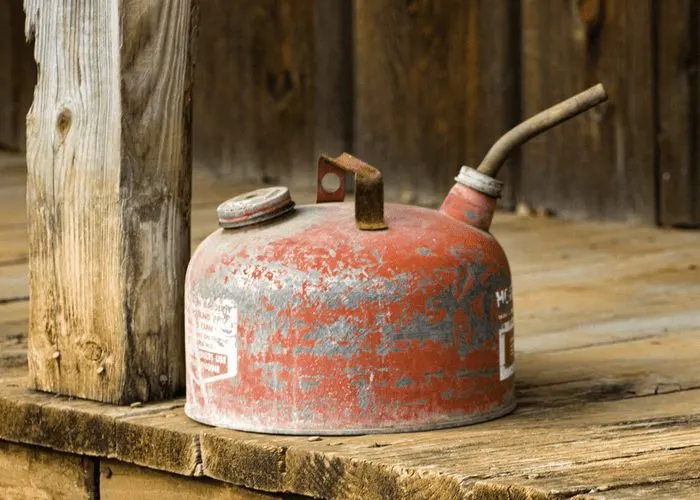
Kathy Clark/Shutterstock
You may be able to recondition old gas and reuse it without resorting to a recycling facility. Gas becomes unusable when it gets too old or gets contaminated.
If gas sits in a tank unused for just a few months, it can start to break down and cause problems in an engine. If it gets contaminated with water or some other liquid, it is also a bad idea to put it into a motor.
You can check gas that has been stored for a while by comparing it with fresh gas. Pour some of both into clear containers. If you notice a sour smell coming from the old gas, it may be too stale to use.
Now compare the two containers. If the older sample has a darker color or bits of dirt, rust, or sediment in it, it’s not fit for use in an engine.
Using Stale Gas
You may be able to use stale gas in some engines if you mix it with fresh gas. Use a ratio of 1 part old gas to 5 parts new gas. This may work in small engines such as lawn mowers and pressure washers.
But read your owner’s manual first to see if it warns against mixing fresh and stale gas. And don’t use this blended old-new gas in an automobile engine. Car motors use sophisticated fuel injection and computer-controlled ignition systems that require strictly fresh gas.
You may be able to reuse dirt- or rust-contaminated gas sediment by pouring gas from one container into another. Use two layers of cloth or coffee filter paper to strain out particles.
Check to make sure the gas is clear before using it in an engine. If your gas is contaminated with water, pour it into a transparent container. Let the water settle to the bottom.
Then carefully pour off as much gasoline as you can while leaving the water in the container. Adding a fuel drying agent such as isopropanol can keep any remaining water from causing problems.
Let the remaining water-gas mixture evaporate. Do this in a well-ventilated area, and keep kids and pets away.
How to Avoid Disposing of Old Gas
Want to know the best solution to this problem?
Avoid having old gas in the first place. Estimate how much gas you’ll need and buy no more than you can use before it gets old.

